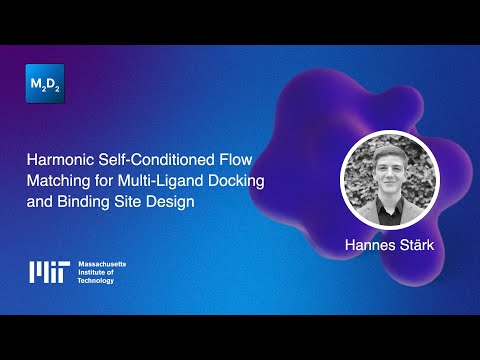Description:
Explore a comprehensive talk on advanced AI techniques for protein-ligand binding and binding site design. Delve into HarmonicFlow, an improved generative process for 3D protein-ligand binding structures, and FlowSite, which extends this model to jointly generate protein pocket residue types and molecule binding structures. Learn about the self-conditioned flow matching objective, the application of flow models to docking problems, and how these approaches outperform state-of-the-art methods in simplicity, generality, and performance. Discover the potential impact of these techniques on drug discovery, enzymatic catalysis, and energy storage applications. Gain insights into the technical aspects of 3D flow matching generative models, structure self-conditioning, and the use of harmonic priors for multi-ligand docking. Examine the performance of these models on the PDBBind dataset and their ability to recover residue types of known binding sites.

Harmonic Self-Conditioned Flow Matching for Multi-Ligand Docking and Binding Site Design
Add to list
#Science
#Chemistry
#Computational Chemistry
#Life Science
#Drug Discovery
#Computer Science
#Artificial Intelligence
#Generative AI
#Generative Models
#Biology
#Molecular Biology
#Molecular Docking